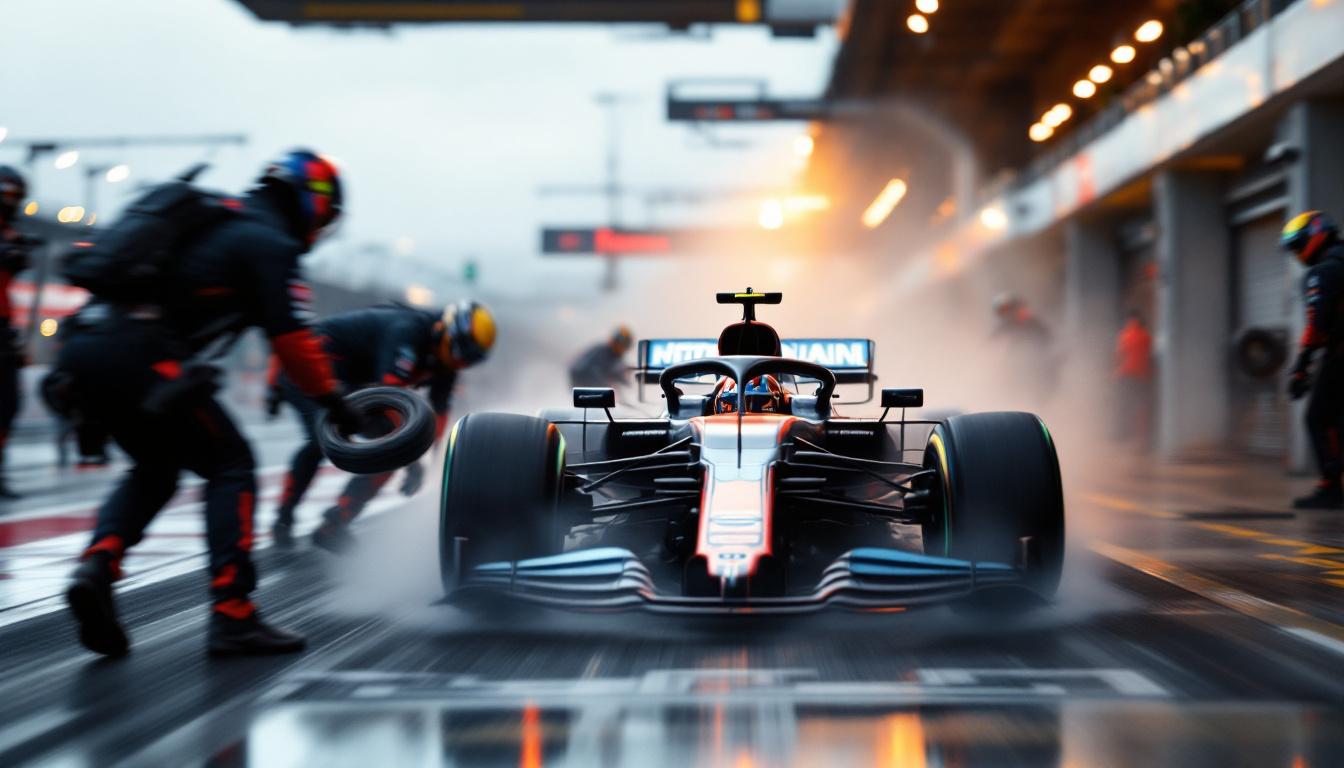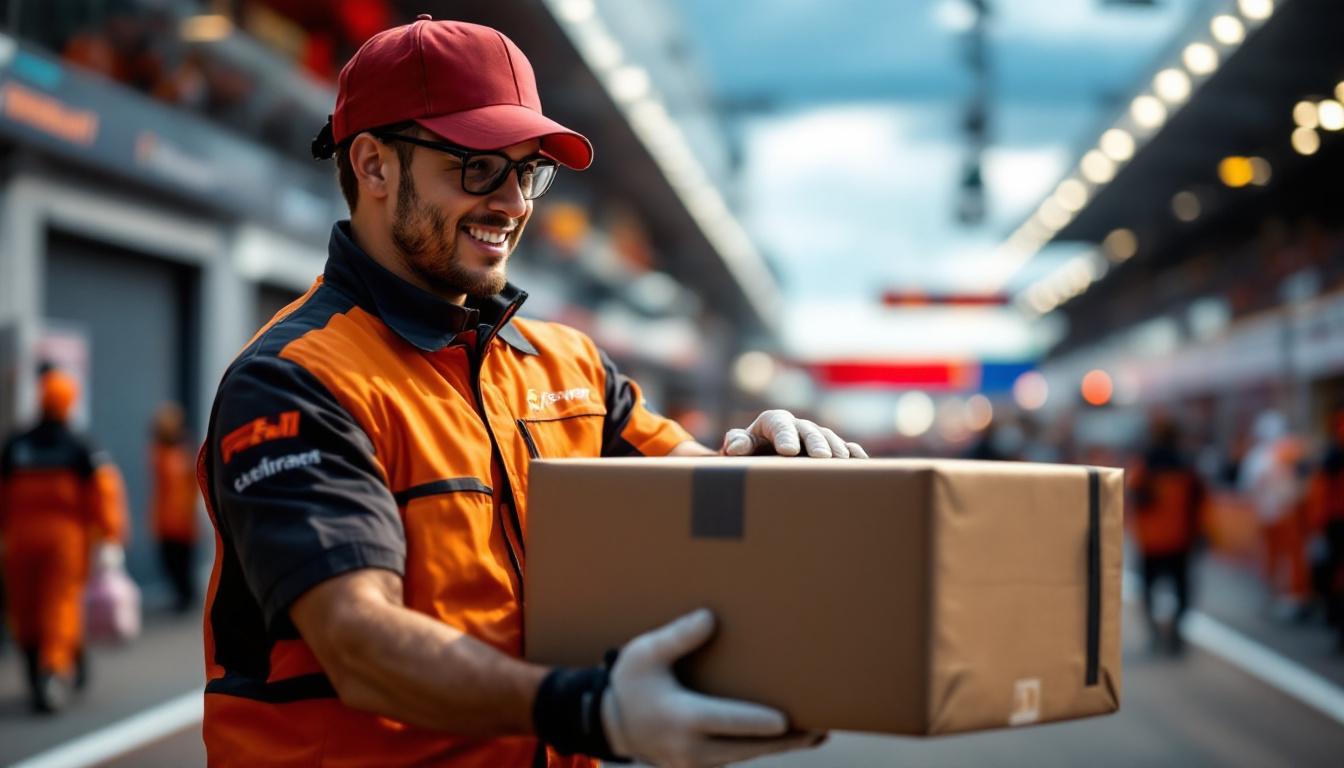In the high-stakes world of Formula 1 racing, every millisecond counts. Teams are constantly searching for ways to gain an advantage over their competitors, and one of the most intriguing methods they employ is the use of hand carry couriers. This article explores how these couriers play a crucial role in the fast-paced environment of F1, ensuring that teams maintain their edge on and off the track.
The Importance of Speed and Precision
In Formula 1, the difference between victory and defeat can often be measured in fractions of a second. This urgency drives teams to seek out the fastest and most reliable methods for transporting vital components and documents. Hand carry couriers have emerged as a preferred solution for many teams, offering a unique blend of speed and precision. The stakes are incredibly high, with millions of dollars invested in each race, and every second counts when it comes to performance on the track.

What Are Hand Carry Couriers?
Hand carry couriers are specialized couriers who transport items personally, rather than relying on traditional shipping methods. This approach allows for greater control over the delivery process, ensuring that sensitive materials arrive at their destination quickly and safely. In the context of Formula 1, these couriers are often tasked with transporting critical components, technical documents, and even sensitive data. Their role is not only about speed but also about maintaining the integrity of the items being transported, which can include everything from high-tech sensors to confidential race strategies.
The role of a hand carry courier goes beyond mere transportation. These professionals are trained to navigate complex logistics, often working under tight deadlines and high-pressure situations. Their ability to adapt to changing circumstances makes them invaluable assets to F1 teams. They are often required to be familiar with the specific needs of the teams they serve, understanding the intricacies of each component and the urgency of its delivery. This specialized knowledge allows them to anticipate potential issues and proactively seek solutions, ensuring that every delivery is executed flawlessly.
Why F1 Teams Rely on Hand Carry Couriers
There are several reasons why Formula 1 teams choose to utilize hand carry couriers. Firstly, the nature of the sport demands rapid response times. When a team needs a specific part or piece of information, waiting for standard shipping methods can lead to missed opportunities and lost races. The fast-paced environment of F1 means that teams must be prepared to pivot quickly, and hand carry couriers provide the agility needed to keep up with the ever-evolving demands of the competition.
Additionally, the sensitive nature of many components—such as engine parts, aerodynamic elements, and proprietary technology—requires a level of security that standard shipping cannot guarantee. Hand carry couriers provide a personal touch, ensuring that these items are handled with care and delivered directly to the intended recipient. This level of attention is crucial, as even minor damage or delays can have significant repercussions on a team’s performance. Furthermore, the couriers often have established relationships with team members, fostering trust and communication that enhances the overall efficiency of the logistics process. Their presence on-site during critical moments can also facilitate immediate feedback and adjustments, further streamlining operations during race weekends.
Critical Components Transported by Couriers
In the world of Formula 1, the components that couriers transport can vary widely, but they all share one common trait: they are essential to the team’s performance. Understanding what these components are can shed light on the vital role couriers play in the overall success of a team.

Technical Documents and Blueprints
One of the most important items transported by hand carry couriers are technical documents and blueprints. These documents contain crucial information about car specifications, design changes, and performance data. When a team is making last-minute adjustments to their vehicle, having immediate access to these documents can be the difference between success and failure.
Moreover, these documents often contain proprietary information that teams want to keep confidential. Hand carry couriers ensure that sensitive data does not fall into the wrong hands, providing an added layer of security during transportation.
Race Components and Spare Parts
During a race weekend, teams are constantly on the lookout for ways to optimize their cars. This often involves the need for specific race components or spare parts that may not have been included in the initial shipment. Hand carry couriers are called upon to deliver these items quickly, allowing teams to make necessary adjustments without delay.
Whether it’s a new set of tires, a modified suspension component, or even a replacement part for a damaged section of the car, the ability to get these items to the pit crew in record time is crucial. Every second counts during a race, and having the right parts on hand can significantly impact a team’s performance.
Data and Telemetry
In the modern era of Formula 1, data is king. Teams collect vast amounts of telemetry data during practice sessions and races, which can be analyzed to make real-time decisions. Hand carry couriers are often responsible for transporting this data between the track and the team’s headquarters or engineering facilities.
This data can include everything from engine performance metrics to tire wear analysis. By ensuring that this information is delivered quickly and securely, couriers help teams make informed decisions that can influence race strategy and car setup.
The Logistics of Hand Carry Courier Services
Utilizing hand carry couriers involves a complex web of logistics that teams must navigate to ensure timely deliveries. From planning routes to managing schedules, the logistics behind these courier services are as intricate as the racing strategies employed by the teams themselves.
Route Planning and Timing
Effective route planning is essential for hand carry couriers, especially during race weekends when time is of the essence. Couriers must be familiar with the local geography of each race location, including potential traffic patterns and any obstacles that could delay delivery.
Timing is also critical. Couriers often work on tight schedules, coordinating deliveries to coincide with specific events or team needs. This requires excellent communication skills and the ability to adapt to changing circumstances, such as last-minute requests or unexpected delays.
Security Measures
Given the sensitive nature of the items being transported, security is a top priority for hand carry couriers. Teams often implement strict protocols to ensure that their materials are protected throughout the delivery process. This may include background checks for couriers, secure packaging, and tracking systems to monitor the location of items in transit.
Additionally, couriers may be required to sign non-disclosure agreements (NDAs) to safeguard proprietary information. This level of security helps teams maintain their competitive advantage while ensuring that critical components and data are handled with the utmost care.
Case Studies: Success Stories in F1
Several notable examples illustrate how hand carry couriers have made a significant impact in the world of Formula 1. These case studies highlight the effectiveness of this service in real-world scenarios, showcasing the value it brings to teams.

Last-Minute Component Delivery
One prominent case involved a leading F1 team that faced a critical issue with their car just hours before a race. A vital component had been damaged during practice, and the team needed a replacement part delivered immediately. A hand carry courier was dispatched from the team’s headquarters, navigating through traffic to reach the race venue in record time.
The courier arrived just as the team was preparing for qualifying, allowing them to make the necessary repairs and ultimately secure a strong position on the grid. This incident underscored the importance of having a reliable courier service that could respond to urgent needs without delay.
Data Transfer During Race Weekends
In another instance, a team relied on hand carry couriers to transport telemetry data collected during practice sessions back to their engineering team. This data was analyzed in real-time, leading to crucial adjustments in car setup for the race. The ability to quickly transfer this information allowed the team to optimize their performance, contributing to a successful race outcome.
Such examples demonstrate how the strategic use of hand carry couriers can enhance a team’s performance, allowing them to make informed decisions based on the latest data and ensuring that they are always prepared for any situation.
The Future of Hand Carry Courier Services in F1
As Formula 1 continues to evolve, so too will the role of hand carry couriers. With advancements in technology and logistics, the future promises even greater efficiency and effectiveness in this area.
Technological Integration
One of the most significant trends in logistics is the integration of technology. Hand carry courier services are beginning to utilize advanced tracking systems, allowing teams to monitor the status of their deliveries in real time. This level of transparency enhances communication and ensures that teams are always aware of the location of critical components.
Additionally, the use of mobile apps and digital platforms can streamline the process of requesting and managing deliveries. This technological integration will likely lead to even faster response times and improved coordination between teams and couriers.
Expanding Roles for Couriers
As the demands of Formula 1 grow, the roles of hand carry couriers may also expand. Beyond transporting physical items, couriers may become involved in managing logistics and coordinating with various stakeholders, including suppliers and team members. This evolution could position couriers as integral parts of the overall team strategy, enhancing their value in the competitive landscape of F1.
Conclusion
Hand carry couriers play a vital role in the world of Formula 1, providing teams with the speed, precision, and security they need to maintain their competitive edge. From transporting critical components to delivering sensitive data, these couriers are an essential part of the racing ecosystem.
As technology continues to advance and the demands of the sport evolve, the importance of hand carry couriers is likely to grow even further. Their ability to adapt to changing circumstances and respond to urgent needs ensures that Formula 1 teams remain at the forefront of innovation and performance.
In a sport where every detail matters, the contributions of hand carry couriers are invaluable, helping teams navigate the complexities of racing and ultimately achieve success on the track.


